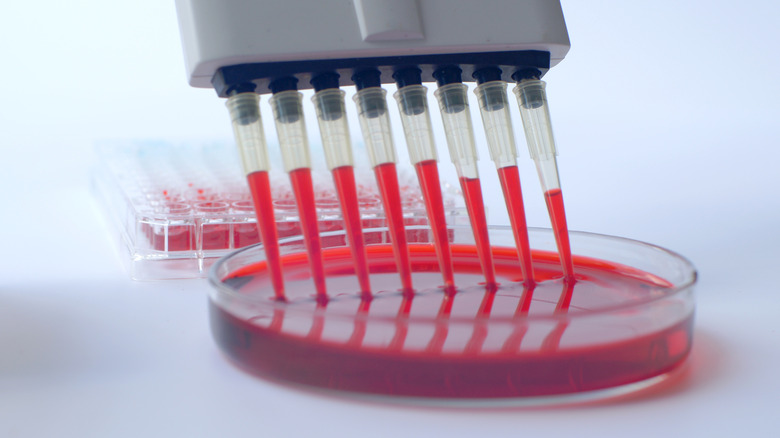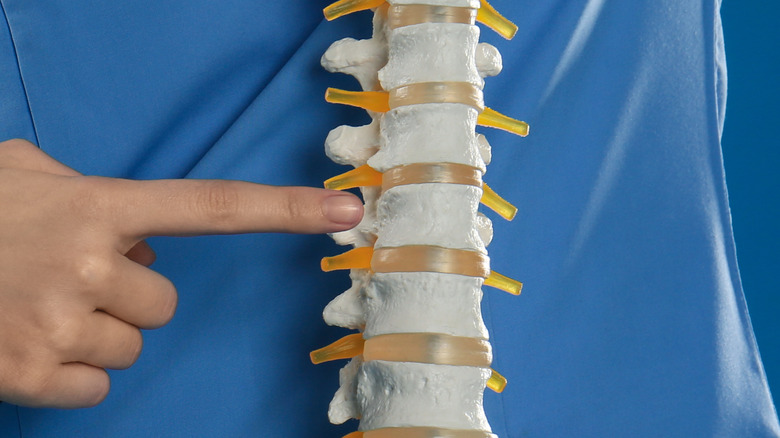How Does Your Body Make Blood?
Blood is the primary carrier of oxygen and nutrients throughout your body, according to the Texas Heart Institute. It is made of plasma, which is 80% water and 20% solid material. There are anywhere between 10 and 12 pints of blood in an average male body and between 8 and 9 pints of blood in the average female body. Blood contains red blood cells, white blood cells, and platelets, and each of these cells has different responsibilities.
Red blood cells transport oxygen throughout the body, and they are the most plentiful. Platelets help blood clot, while white blood cells prevent infections. White blood cells are also critical to the immune system. Medical News Today notes that blood removes waste from the body, such as carbon dioxide, lactic acid, and urea. In addition to supplying the body with oxygen, blood provides glucose, amino acids, and fatty acids to other cells and tissue.
Your bones make most of your blood
About 95% of your blood is made in the marrow of your bones, according to Johns Hopkins Medicine. Bone marrow is the soft tissue on the inside of your bones. Interestingly, the pelvic bones, breastbone, and the bones of the spine produce the most blood cells in adults.
In the first stage of development, blood cells are called stem cells. Some of these cells mature into red blood cells, white blood cells, or platelets, while those that remain immature stay in the marrow. These immature cells are also referred to as blasts. The liver, spleen and lymph nodes help regulate blood production in the body.
A 2015 study published in the journal Blood notes that thrombopoietin is responsible for the body's production of platelets. Common blood tests can help identify certain diseases and conditions that affect blood regulation (via University of Rochester Medical Center).


